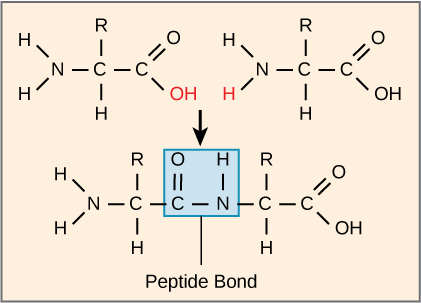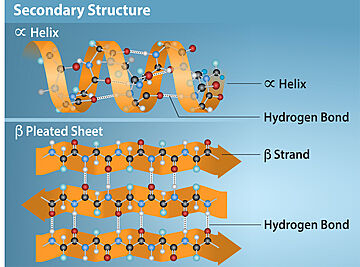Lactase (a protein)
From Proteopedia
| Line 3: | Line 3: | ||
This page assumes basic textbook knowledge of protein chemistry. For a refresher, see the relevant section of the first chapters of any college biology textbook, e.g. [https://bio.libretexts.org/Bookshelves/Introductory_and_General_Biology/General_Biology_2e_(OpenStax)/01%3A_Unit_I-_The_Chemistry_of_Life/1.03%3A_Biological_Macromolecules/1.3.05%3A_Proteins this one]. | This page assumes basic textbook knowledge of protein chemistry. For a refresher, see the relevant section of the first chapters of any college biology textbook, e.g. [https://bio.libretexts.org/Bookshelves/Introductory_and_General_Biology/General_Biology_2e_(OpenStax)/01%3A_Unit_I-_The_Chemistry_of_Life/1.03%3A_Biological_Macromolecules/1.3.05%3A_Proteins this one]. | ||
| - | <StructureSection load='' size=' | + | <StructureSection load='' size='350' side='right' caption='' scene='10/1056674/Secondary/2'> |
==Structure== | ==Structure== | ||
| Line 20: | Line 20: | ||
Tertiary structure refers to the overall shape resulting from the assembly of secondary structure elements through <jmol> | Tertiary structure refers to the overall shape resulting from the assembly of secondary structure elements through <jmol> | ||
<jmolLink> | <jmolLink> | ||
| - | <script> moveto 1.0 { | + | <script> moveto 1.0 { 761 578 295 157.18} 1237.57 0.0 0.0 {-25.64624999999998 35.13546296296296 -40.1739398148148} 150.0601990776041 {0 0 0} 0 0 0 3.0 0.0 0.0;;script /scripts/10/1056674/Tertiary/3.spt</script> |
<text>interactions between their side chains</text> | <text>interactions between their side chains</text> | ||
</jmolLink> | </jmolLink> | ||
Revision as of 15:07, 25 August 2024
Lactase is an enzyme, i.e. a protein that catalyzes a chemical reaction. The function of lactase is to hydrolyze lactose, a disaccharide found in cow milk and milk products. Individuals who lack lactase have trouble digesting milk unless they take a medication like Lactaid, which contains lactase from yeasts or bacteria to supplement the lack of endogenous enzyme.
This page assumes basic textbook knowledge of protein chemistry. For a refresher, see the relevant section of the first chapters of any college biology textbook, e.g. this one.
| |||||||||||
Function
Like all enzymes, lactase first binds to its substrate lactose. While bound to the enzyme, lactose reacts with water, causing its hydrolysis into the carbohydrate building blocks galactose and glucose. The building blocks then leave the enzyme, which is ready for another lactose molecule to bind. In this way, a single enzyme can support millions of consecutive reactions. Lactase belongs to a larger group of enzymes called beta-galactosidases. These enzymes occur in animals, plants, fungi, bacteria and other organisms.


